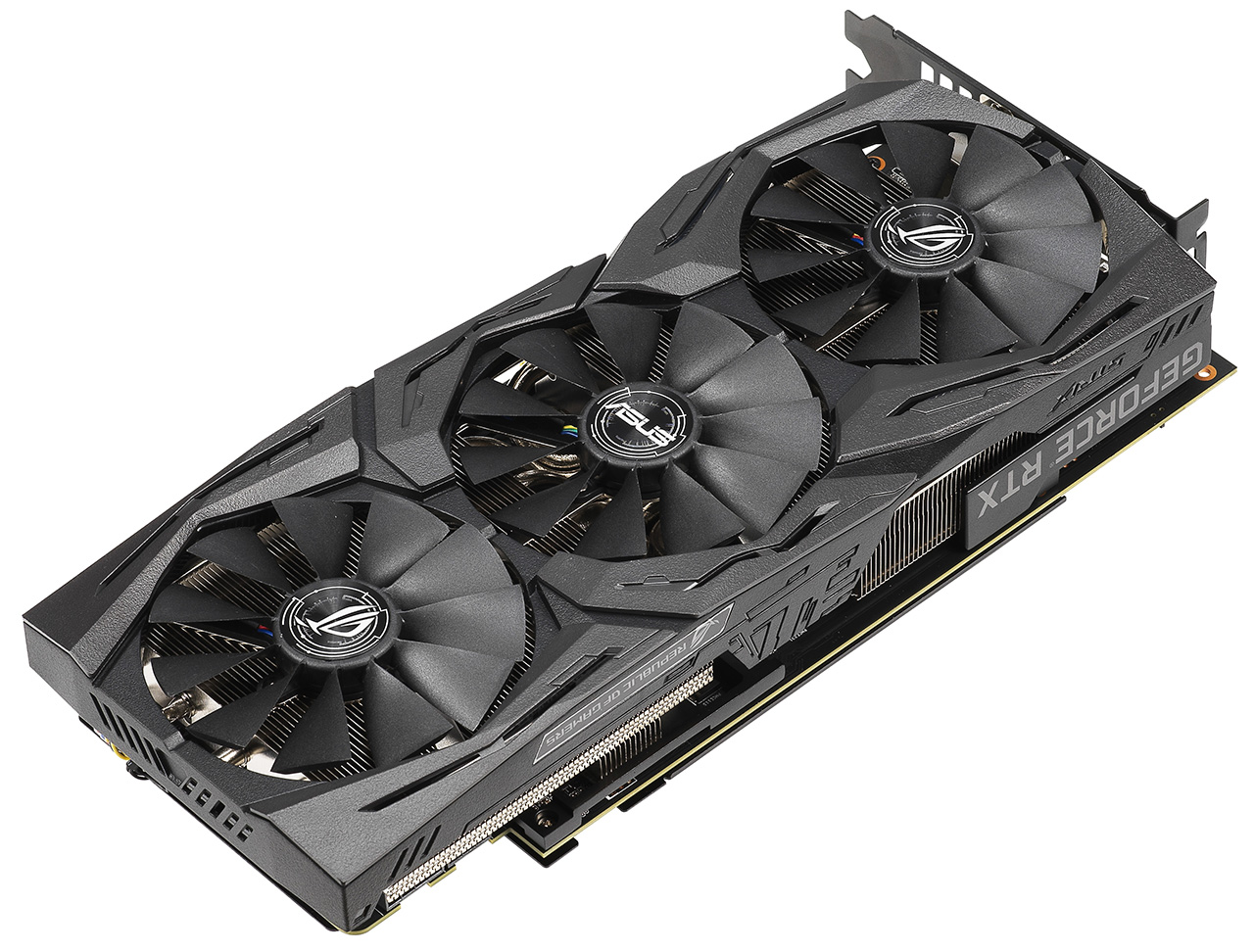Asus ROG Strix GeForce RTX 2070 O8G Gaming Review: Bring Out The Big Guns
Why you can trust Tom's Hardware
Conclusion
For any given graphics card family, whether it’s the GeForce RTX 2080 Ti or Radeon RX 580, we have a natural tendency to look for the lowest-priced model, tweak it within reason, and declare a value winner. Once you start paying for factory overclocks, oversized coolers, bundled software, and flashy lighting, that performance per dollar ratio starts slipping. But Asus’ ROG Strix GeForce RTX 2070 O8G Gaming shows us why it can be worth spending extra for the more elegant solution. A big heat sink and three-fan array make it possible to achieve 1) higher frame rates, 2) lower temperatures, and 3) quiet operation, all at the same time.
We’re mostly ambivalent about this board’s software bundle. And its lighting is mere eye candy. Coming up with a marketing name for process automation verges on puffery, which just isn’t necessary. Really, what matters to us is performance represented by real data. In this case, Asus’ achievements are multi-faceted: they show up in our frame rate results, our fan speed measurements, and our thermal readings. Even the power consumption charts illustrate how Asus’ ROG Strix uses less juice than a much cheaper competitor.
Expect to pay dearly for those strengths, though. At $630/£491, you’re looking at the most expensive GeForce RTX 2070 available. At least in the U.S., an entry-level GeForce RTX 2080 is just $70 away (that same step up costs a lot more in the UK). You have to really love Asus’ attention to detail for this card to be worth its eye-watering premium.
But it's Nvidia that bears the brunt of this review's bad news. The ROG Strix is priced slightly higher than than the GeForce RTX 2070 Founders Edition, yet Asus beats the reference design in almost every way. Sure, Nvidia's FE board obeys a lower power target and is physically smaller (monopolizing two expansion slots instead of three). But its clock rate gets hit a lot harder under load, its fans rotate quite a bit faster, and we don’t care for the eight-pin power connector attached via soldered-on wires. Further, now that Nvidia’s home-grown solution employs axial fans, the Founders Edition’s cooler dumps waste heat back into your case, just like most partner boards.
A decked-out graphics card like the ROG Strix GeForce RTX 2070 O8G Gaming is always going to have something to prove against lower-cost cards in its own class and the cheapest boards one category up (specifically, $700 RTX 2080s). But Asus isn’t trying to attract value seekers. Rather, the ROG Strix is meant for enthusiasts who want a well-appointed product that doesn’t need any manual intervention to optimize its performance attributes. Right out of the box, Asus has us questioning our proclivity for bargain hunting with a well-executed GeForce RTX 2070.
MORE: Best Graphics Cards
MORE: Desktop GPU Performance Hierarchy Table
Get Tom's Hardware's best news and in-depth reviews, straight to your inbox.
MORE: All Graphics Content

